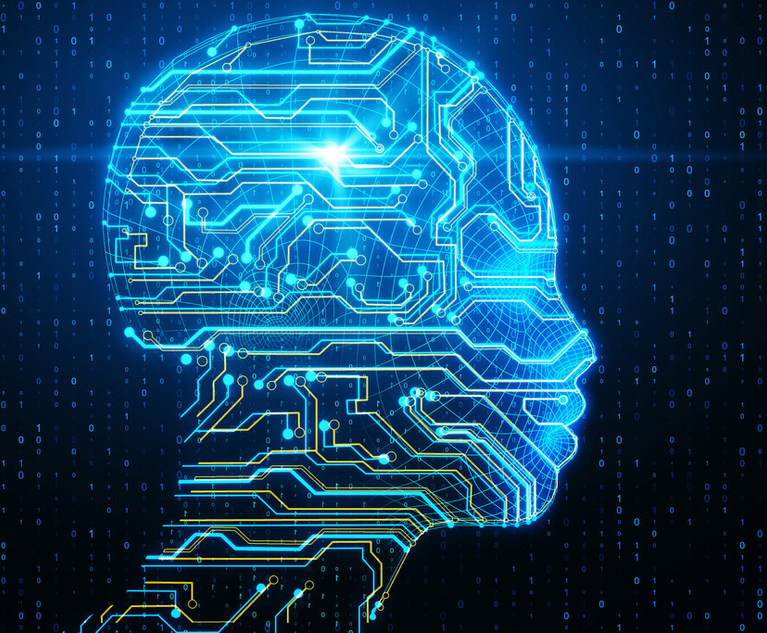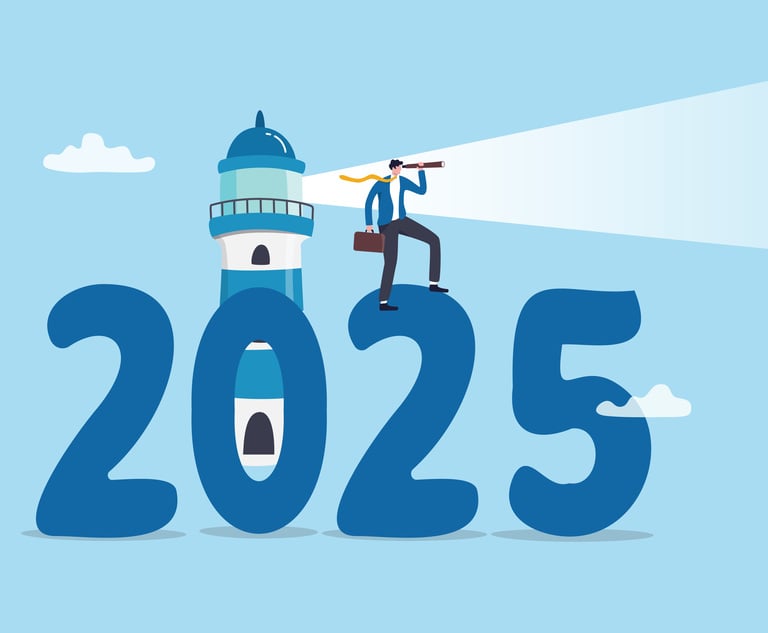 Credit: peshkov/stock.adobe.com
Credit: peshkov/stock.adobe.com2025: A Legal Odyssey—Artificial Intelligence in Products Liability Mass and Class Actions
There is enormous potential in the development and use of AI in products liability mass and class actions, not yet as a replacement for human attorneys, but as a powerful force multiplier.
December 17, 2024 at 03:00 PM
8 minute read
To put artificial intelligence (AI) into much-needed perspective, the infamous archetypal AI computer, HAL 9000, was depicted in "2001: A Space Odyssey." The titular year of that film was almost a quarter-century ago. Though the movie was released in 1968, the premise was loosely based upon an Arthur C. Clarke short story from 1951 (it also bears mentioning that most of the film took place on a manned space mission to Jupiter). Suffice to say that the projected progress and reach of AI has been, at times, overly optimistic.
Notwithstanding, upon peeling back the ongoing flavor of the month fervor over AI, there remains a multifaceted tool particularly applicable to products liability mass and class actions. AI is perhaps as groundbreaking as the introduction of what was originally referred to as the World Wide Web—which, despite the best efforts of various websites purporting to empower any subscriber to draft complex contracts and estate documents, still does not appear to be in danger of rendering human attorneys obsolete any time in the foreseeable future. With that caveat, there is enormous potential in the development and use of AI in products liability mass and class actions, not yet as a replacement for human attorneys, but as a powerful force multiplier.
NOT FOR REPRINT
© 2025 ALM Global, LLC, All Rights Reserved. Request academic re-use from www.copyright.com. All other uses, submit a request to [email protected]. For more information visit Asset & Logo Licensing.
You Might Like
View All
Lack of Available Auto Safety Features Does Not Equal Products Liability Act Violation, NJ Appeals Court Says
4 minute read


Can Implied Warranty Claims Proceed in a Products Liability Setting?
7 minute readTrending Stories
- 1More Litigation Coming? Insulin MDL Gets Boost from FTC Report
- 2Judge Spends 3 Hours Explaining His Decision
- 3Morgan Lewis Closes Shenzhen Office Less Than 2 Years After Launch
- 4On The Move: Freeman Mathis & Gary Adds Florida Partners, Employment Pro Joins Jackson Lewis
- 5New Trouble for Allstate: National Class Action Targets Insurer
Who Got The Work
J. Brugh Lower of Gibbons has entered an appearance for industrial equipment supplier Devco Corporation in a pending trademark infringement lawsuit. The suit, accusing the defendant of selling knock-off Graco products, was filed Dec. 18 in New Jersey District Court by Rivkin Radler on behalf of Graco Inc. and Graco Minnesota. The case, assigned to U.S. District Judge Zahid N. Quraishi, is 3:24-cv-11294, Graco Inc. et al v. Devco Corporation.
Who Got The Work
Rebecca Maller-Stein and Kent A. Yalowitz of Arnold & Porter Kaye Scholer have entered their appearances for Hanaco Venture Capital and its executives, Lior Prosor and David Frankel, in a pending securities lawsuit. The action, filed on Dec. 24 in New York Southern District Court by Zell, Aron & Co. on behalf of Goldeneye Advisors, accuses the defendants of negligently and fraudulently managing the plaintiff's $1 million investment. The case, assigned to U.S. District Judge Vernon S. Broderick, is 1:24-cv-09918, Goldeneye Advisors, LLC v. Hanaco Venture Capital, Ltd. et al.
Who Got The Work
Attorneys from A&O Shearman has stepped in as defense counsel for Toronto-Dominion Bank and other defendants in a pending securities class action. The suit, filed Dec. 11 in New York Southern District Court by Bleichmar Fonti & Auld, accuses the defendants of concealing the bank's 'pervasive' deficiencies in regards to its compliance with the Bank Secrecy Act and the quality of its anti-money laundering controls. The case, assigned to U.S. District Judge Arun Subramanian, is 1:24-cv-09445, Gonzalez v. The Toronto-Dominion Bank et al.
Who Got The Work
Crown Castle International, a Pennsylvania company providing shared communications infrastructure, has turned to Luke D. Wolf of Gordon Rees Scully Mansukhani to fend off a pending breach-of-contract lawsuit. The court action, filed Nov. 25 in Michigan Eastern District Court by Hooper Hathaway PC on behalf of The Town Residences LLC, accuses Crown Castle of failing to transfer approximately $30,000 in utility payments from T-Mobile in breach of a roof-top lease and assignment agreement. The case, assigned to U.S. District Judge Susan K. Declercq, is 2:24-cv-13131, The Town Residences LLC v. T-Mobile US, Inc. et al.
Who Got The Work
Wilfred P. Coronato and Daniel M. Schwartz of McCarter & English have stepped in as defense counsel to Electrolux Home Products Inc. in a pending product liability lawsuit. The court action, filed Nov. 26 in New York Eastern District Court by Poulos Lopiccolo PC and Nagel Rice LLP on behalf of David Stern, alleges that the defendant's refrigerators’ drawers and shelving repeatedly break and fall apart within months after purchase. The case, assigned to U.S. District Judge Joan M. Azrack, is 2:24-cv-08204, Stern v. Electrolux Home Products, Inc.
Featured Firms
Law Offices of Gary Martin Hays & Associates, P.C.
(470) 294-1674
Law Offices of Mark E. Salomone
(857) 444-6468
Smith & Hassler
(713) 739-1250






